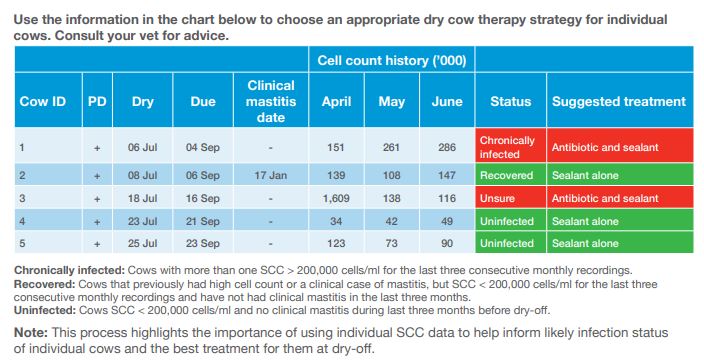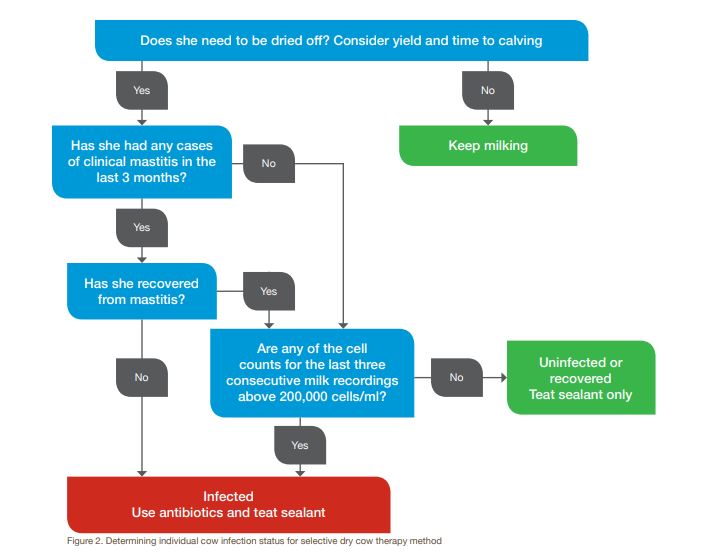- Home
- Knowledge library
- Considerations when drying off dairy cows
Considerations when drying off dairy cows
Dry cow treatment is a vital element of mastitis control and must be selected appropriately to get the best results. The most suitable regime for dry cow therapy will depend on the herd bulk milk somatic cell count and the individual cow infection status.
The three most important actions when drying off your cattle
- Together with your vet, develop, implement and regularly review a dry cow strategy. Your vet must advise and prescribe the most suitable products
- All cows in the herd must be treated with an internal teat sealant
- Irrespective of which dry cow therapy is chosen, aseptic technique is vital
Options for dry cow therapy
Use appropriate options for treatment and prevention of infections for all cows in the herd. Different dry cow therapy products may be used for different cows (i.e., a ‘selective’ approach), in consultation with your vet.
Watch our videos about dry cow decision-making
Teat sealants
- Scientific evidence shows that internal teat sealants work and significantly reduce the risk of new infection while the cow is dry
- Use internal teat sealants for all cows at drying-off
- In combination with antibiotic for infected cows
- Alone in uninfected cows
- If you cannot use internal teat sealants, you could opt for external teat sealants, which are regularly reapplied during the dry period, although their effectiveness is less proven
Antibiotics
Responsible use of antibiotics means using them as little as possible, but as much as necessary. Current concerns over antibiotic resistance means it is necessary to review blanket treatment of antibiotic dry cow therapy. Discuss antibiotic use and your dry cow treatment strategy with your vet. More information is available at ruma.org.uk/cattle
The World Health Organization classes certain antibiotics as critically important for treating difficult infections in human medicine.
High Priority Critically Important Antibiotics include third- and fourth-generation cephalosporins, fluoroquinolones and colistin.
To prevent antimicrobial resistance, avoid using Critically Important Antibiotics unless there is no other effective product for the condition being treated.
- If using antibiotic dry cow therapy for high SCC infected cows, the antibiotic must be effective against the bacteria that increases SCC in the herd
- Giving antibiotic to low SCC uninfected cows can be detrimental and increases the risk of them developing mastitis in the next lactation
- Highest Priority Critically Important Antibiotics are not recommended for routine use at drying-off
- The use of injectable antibiotic at drying-off is not recommended and there is no evidence of its effectiveness
Vaccination
For low SCC herds, you could consider mastitis vaccination to reduce severe clinical mastitis. Speak to your vet for more information.
Determining infection status for dry cow therapy
- Use a drying-off list (available from many on-farm software packages and milk recording organisations) to look at cows that are due to go dry
- Use individual cow somatic cell counts from three consecutive milk recordings, alongside clinical mastitis history for the last 3 months, to determine individual cow infection status
- Classify each cow as uninfected, recovered or chronically infected
Choosing an appropriate dry cow therapy strategy


Watch our video on selective dry cow management

